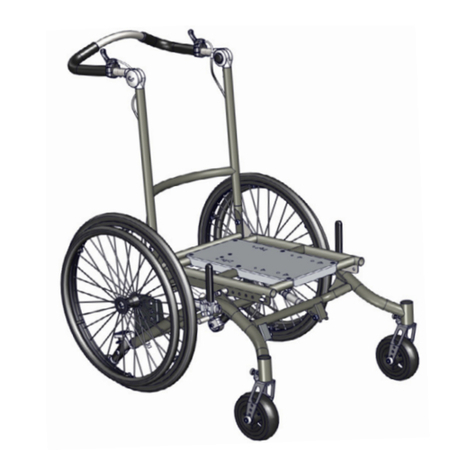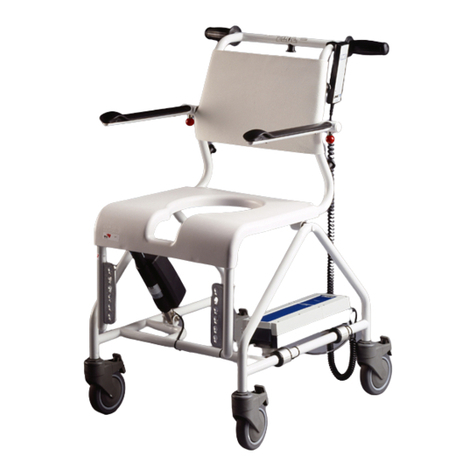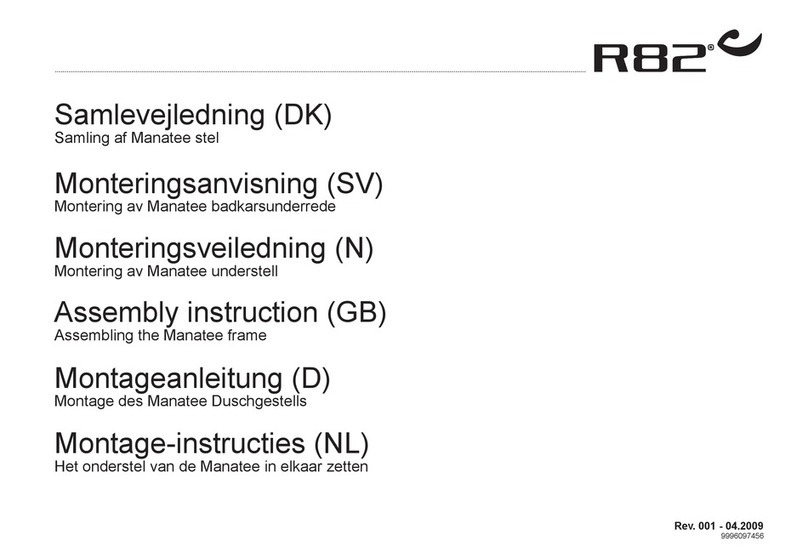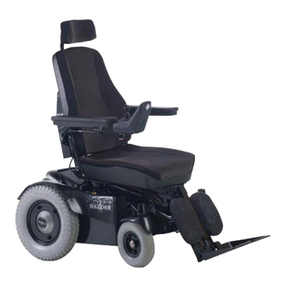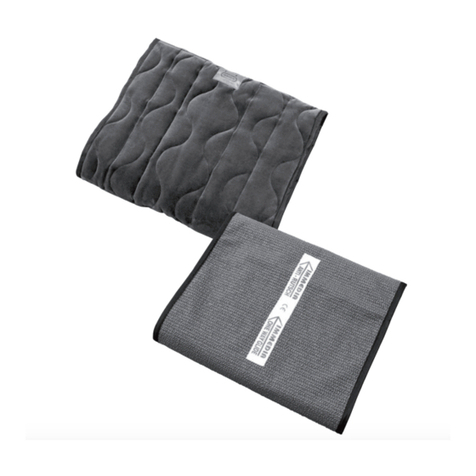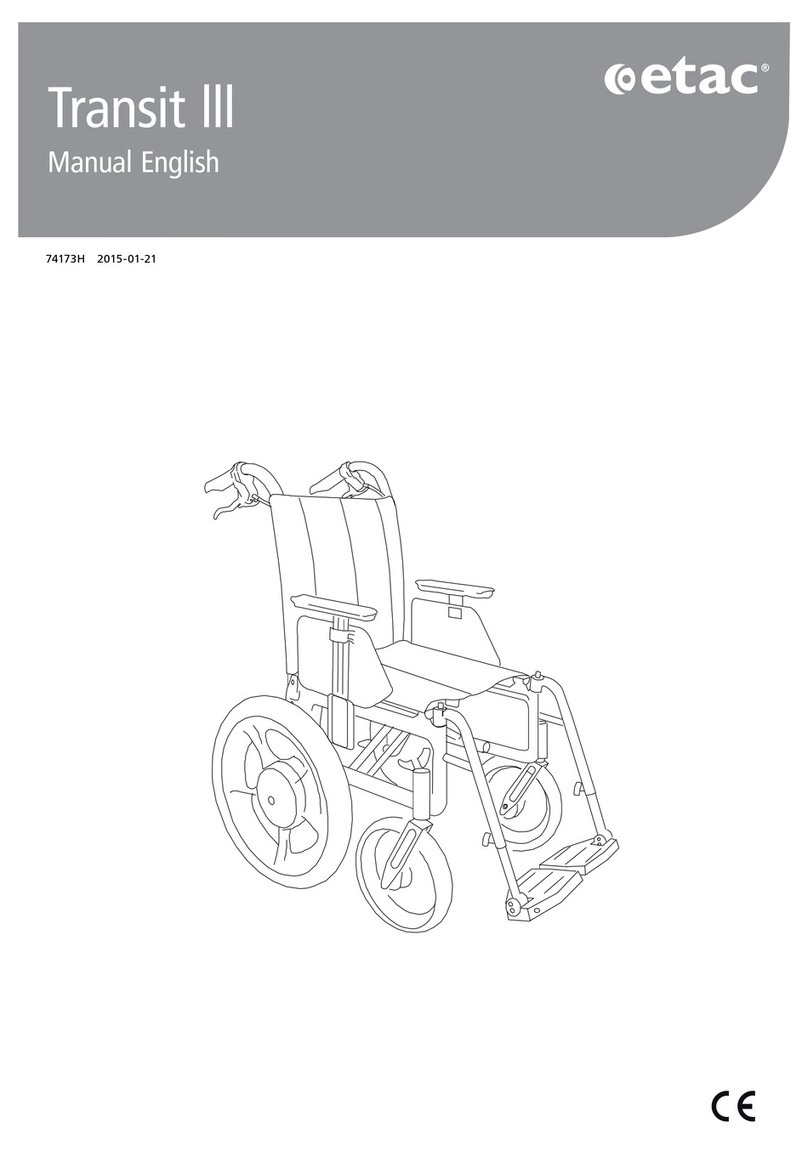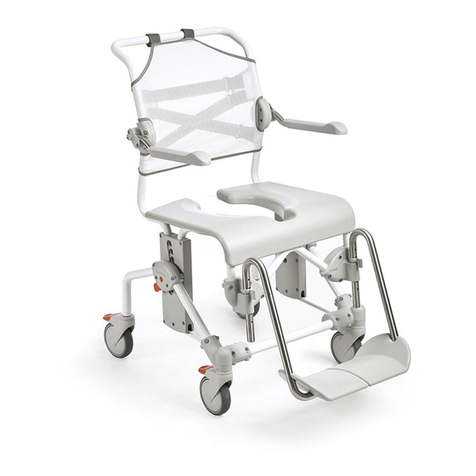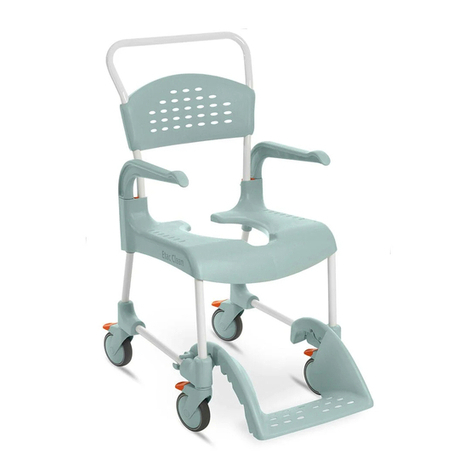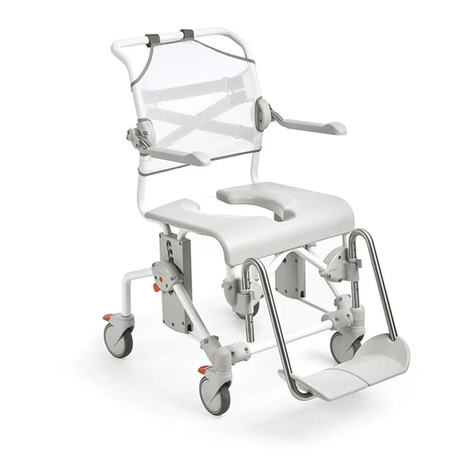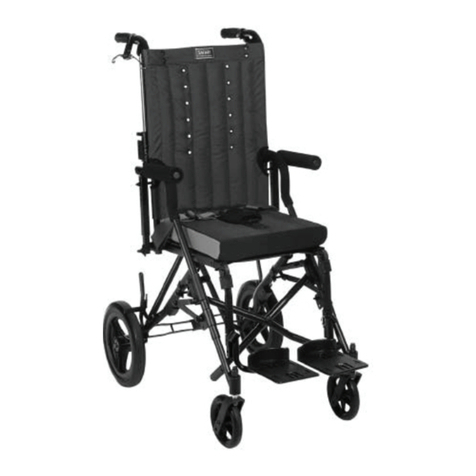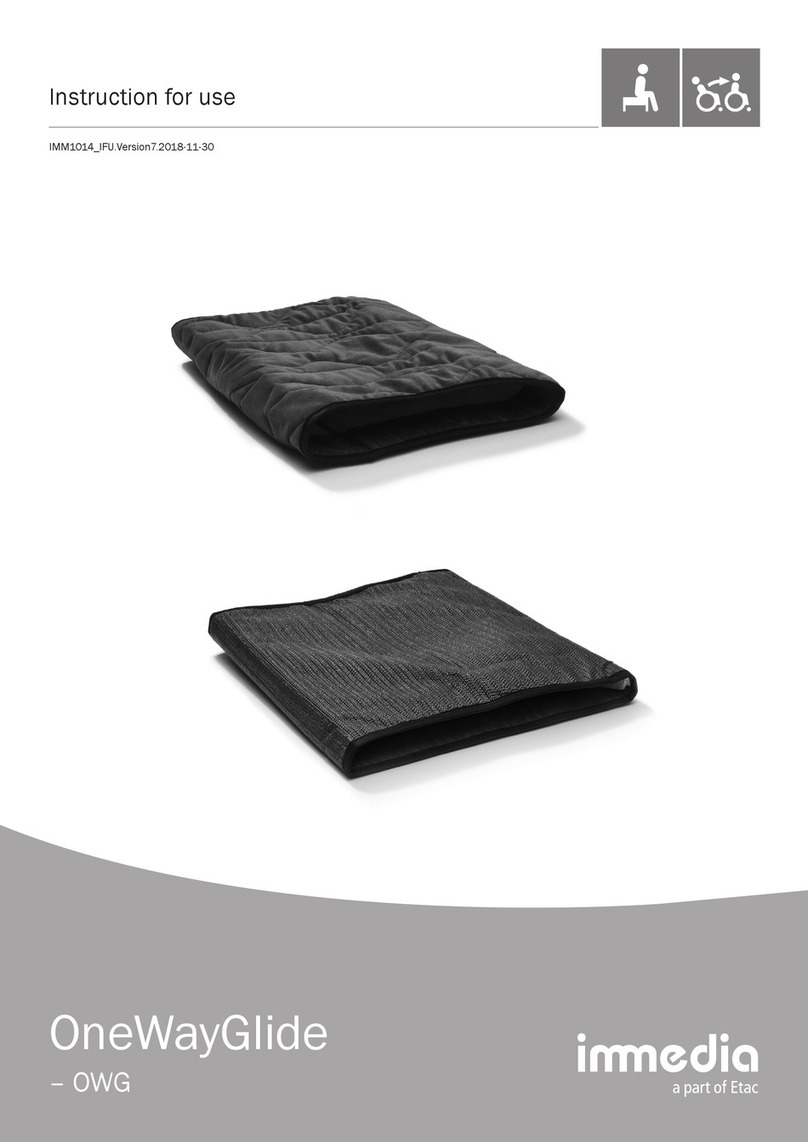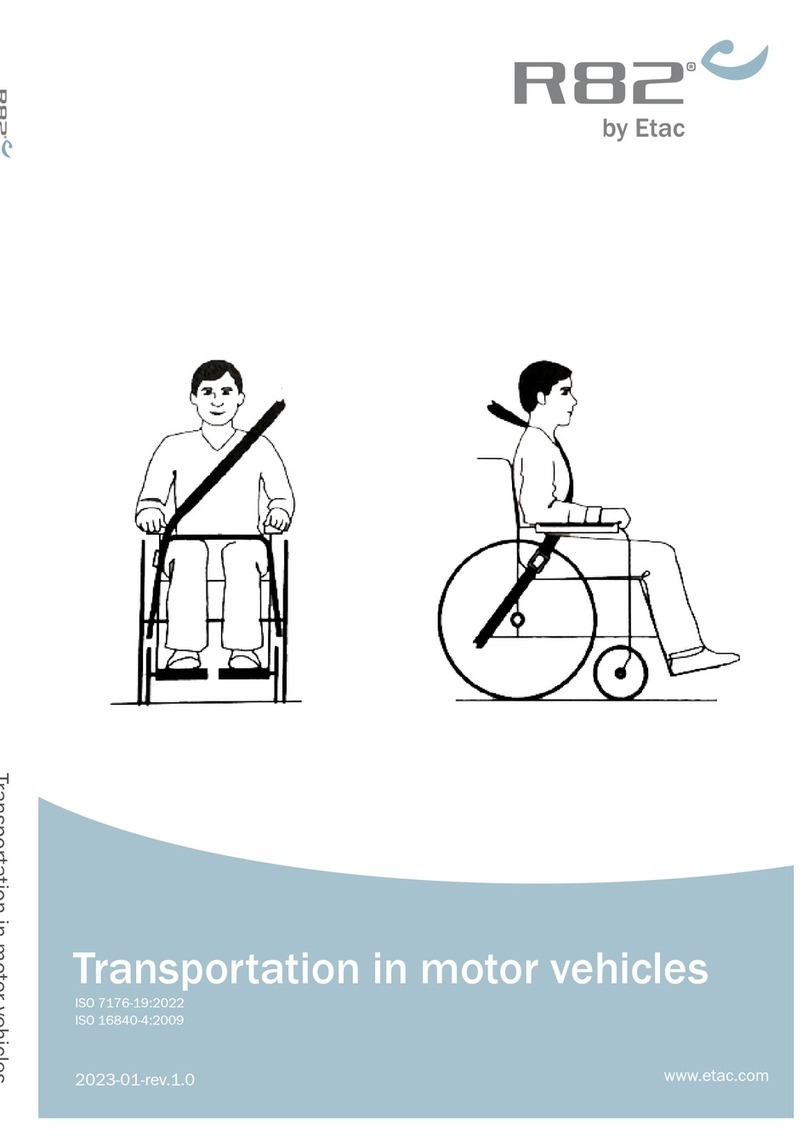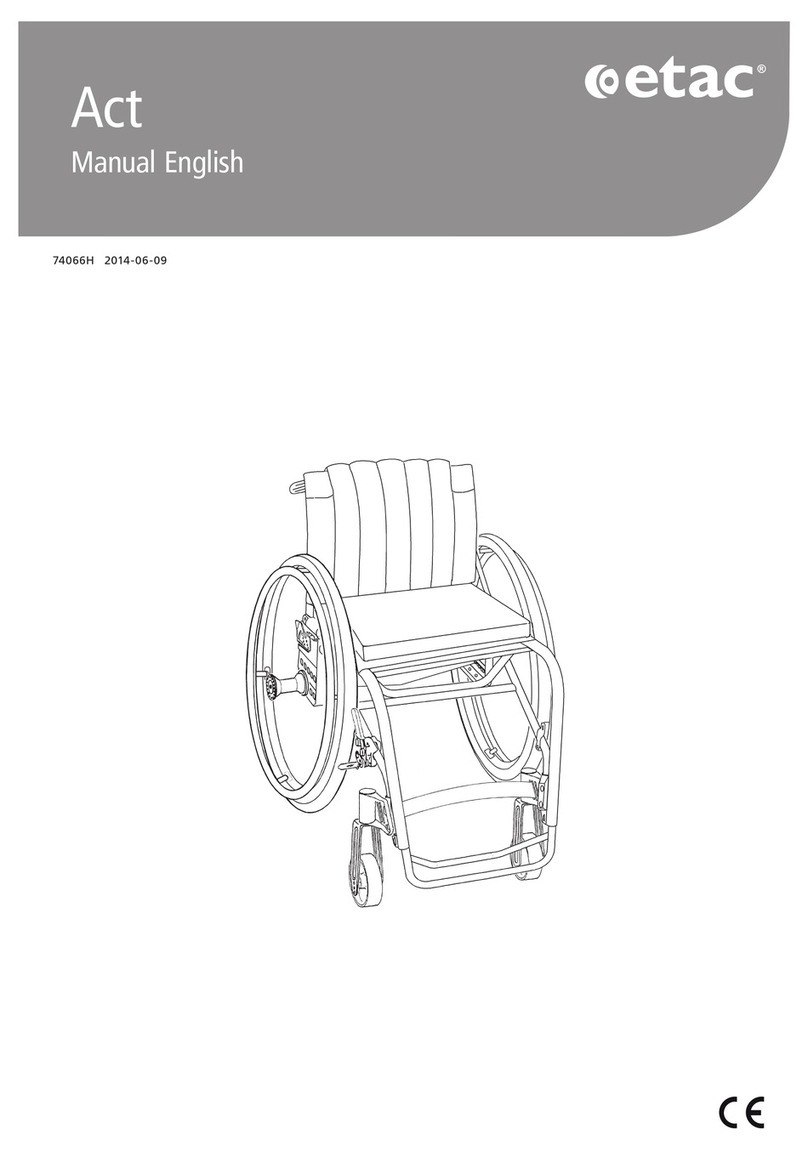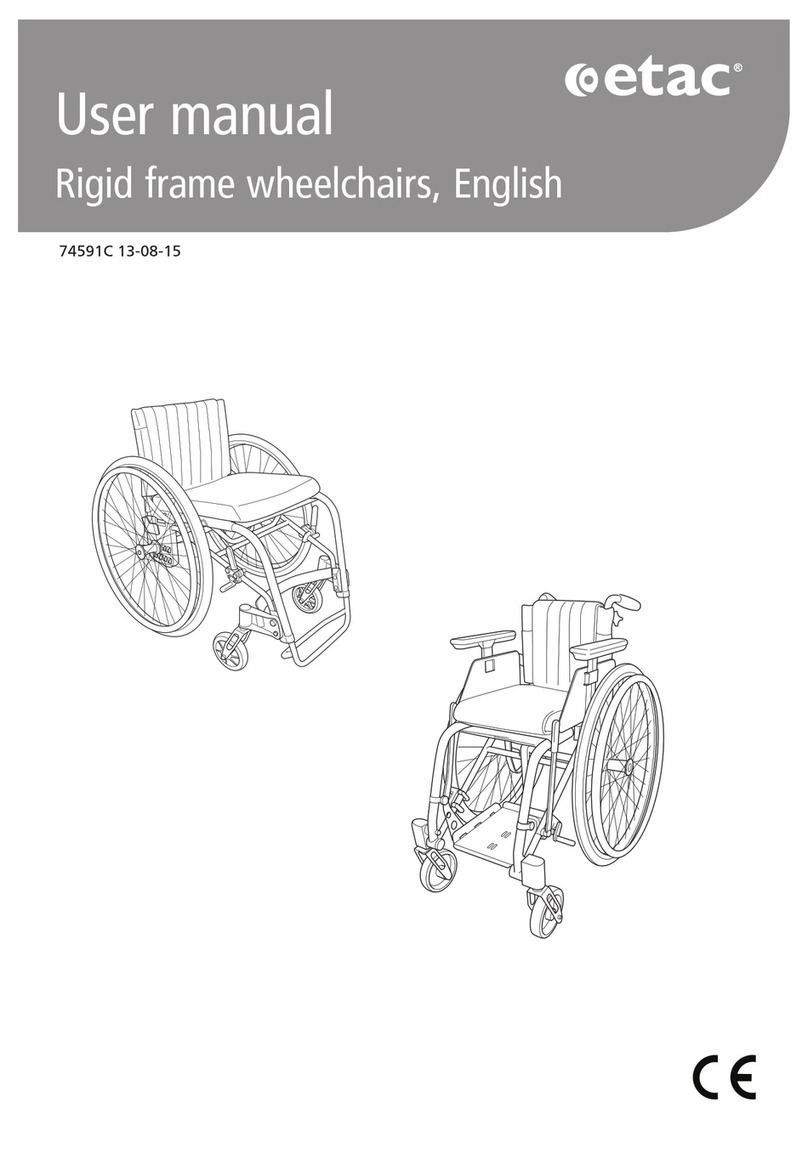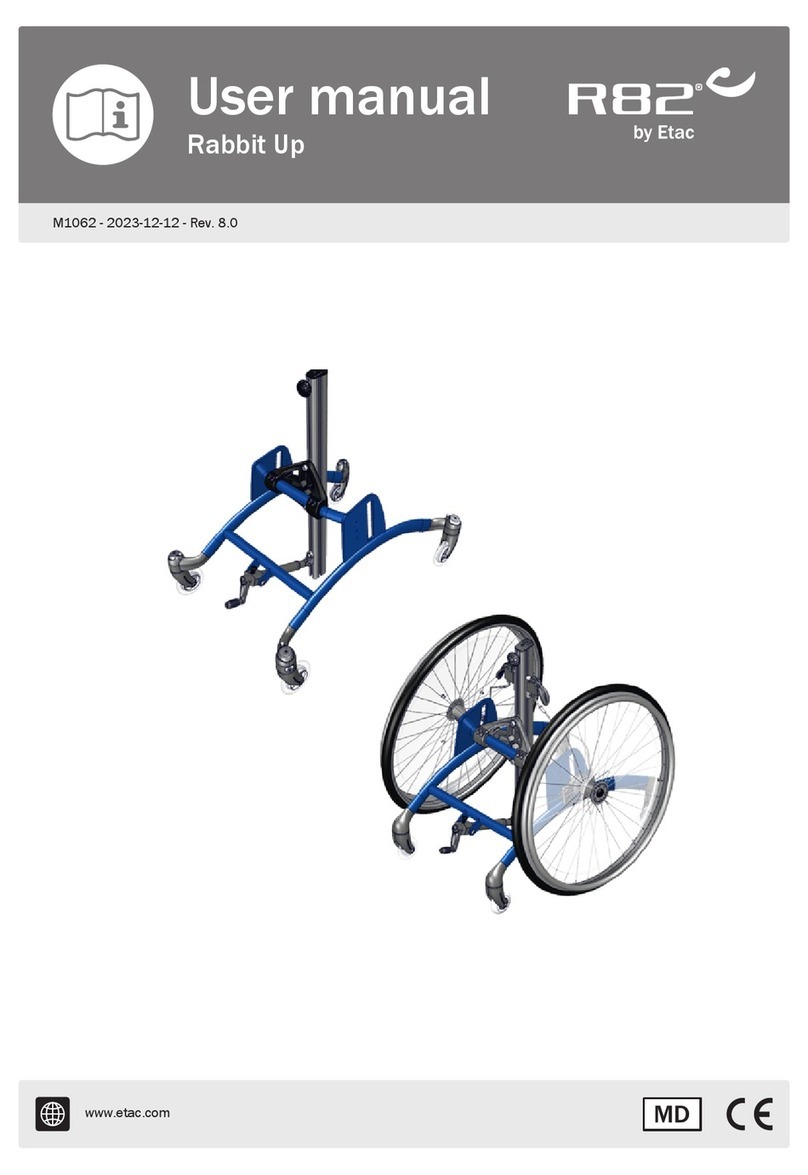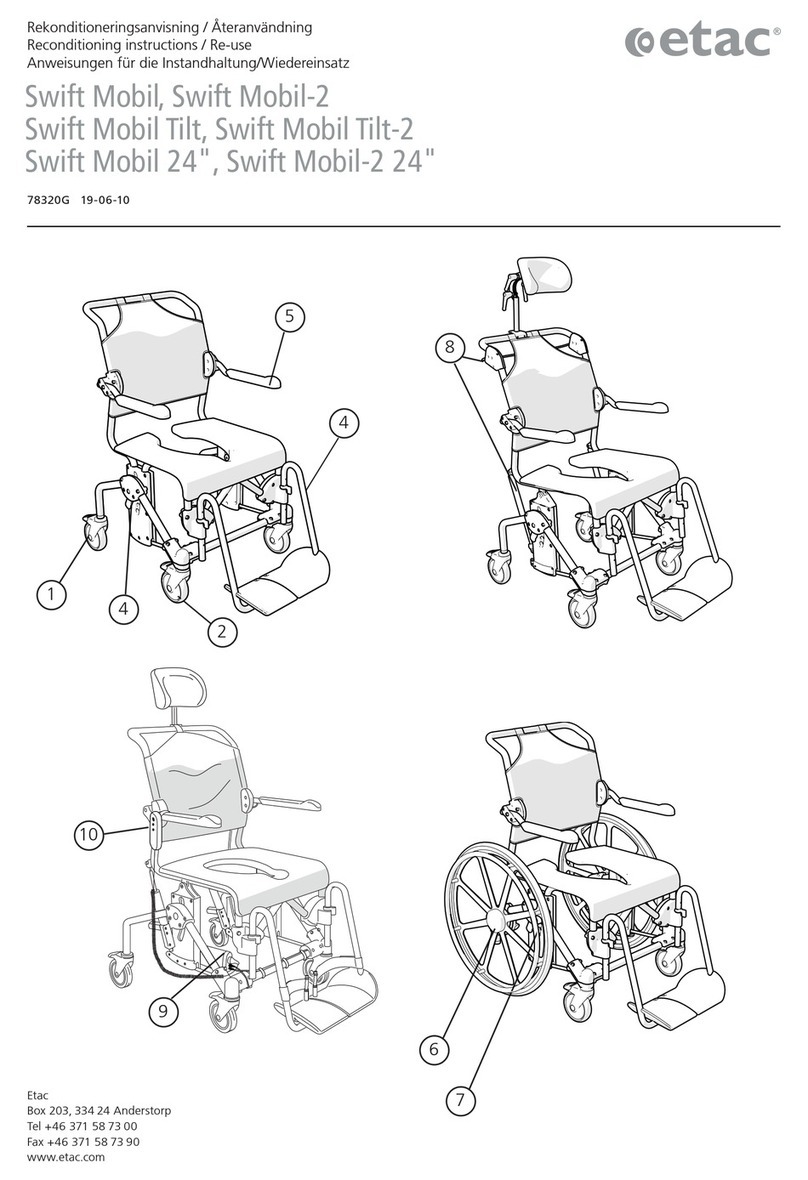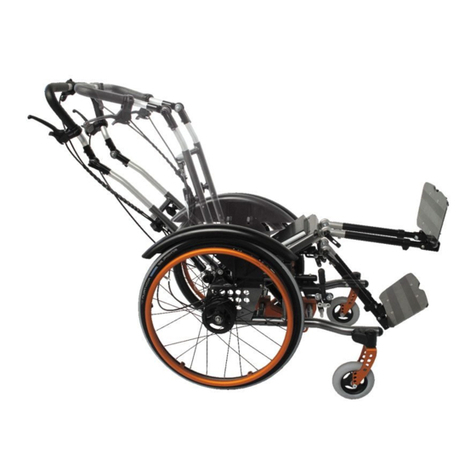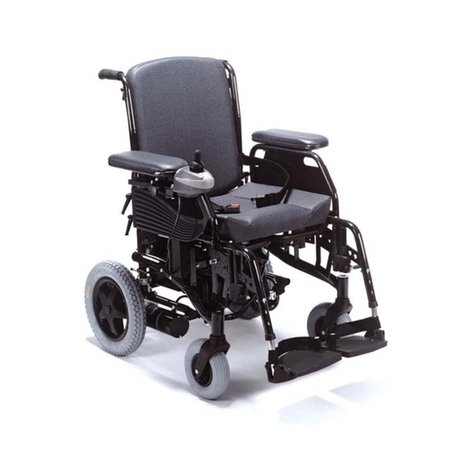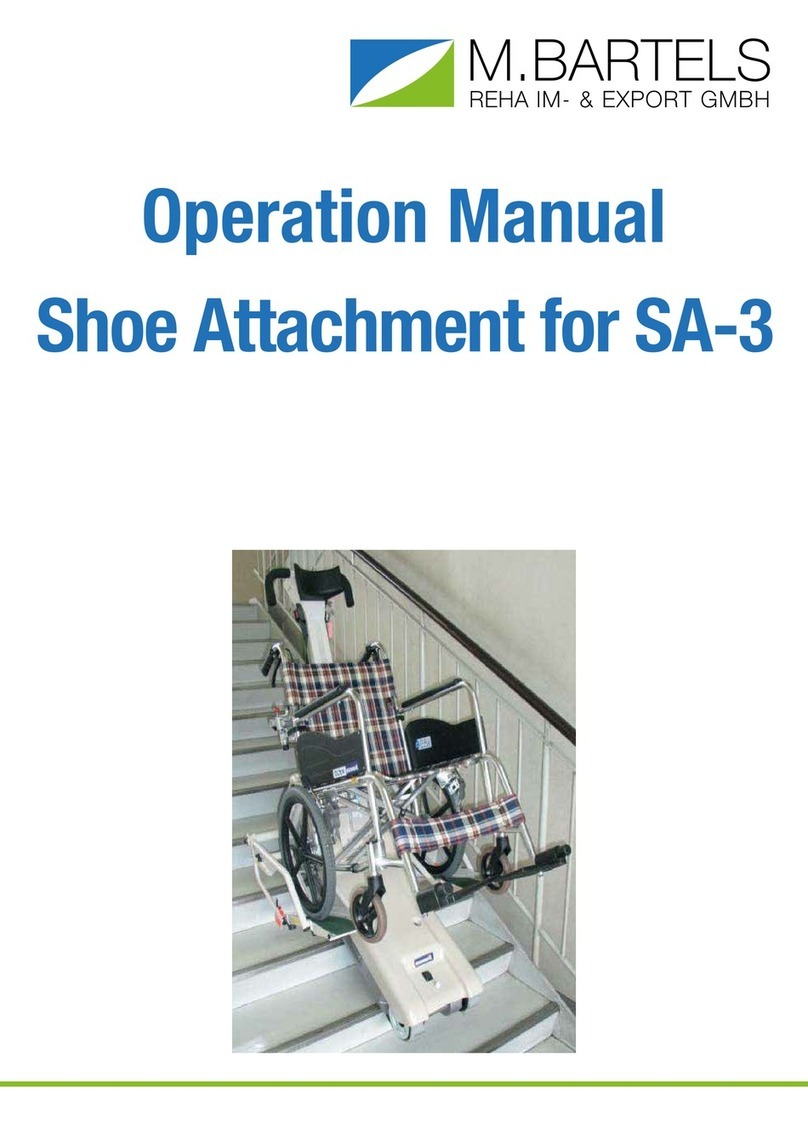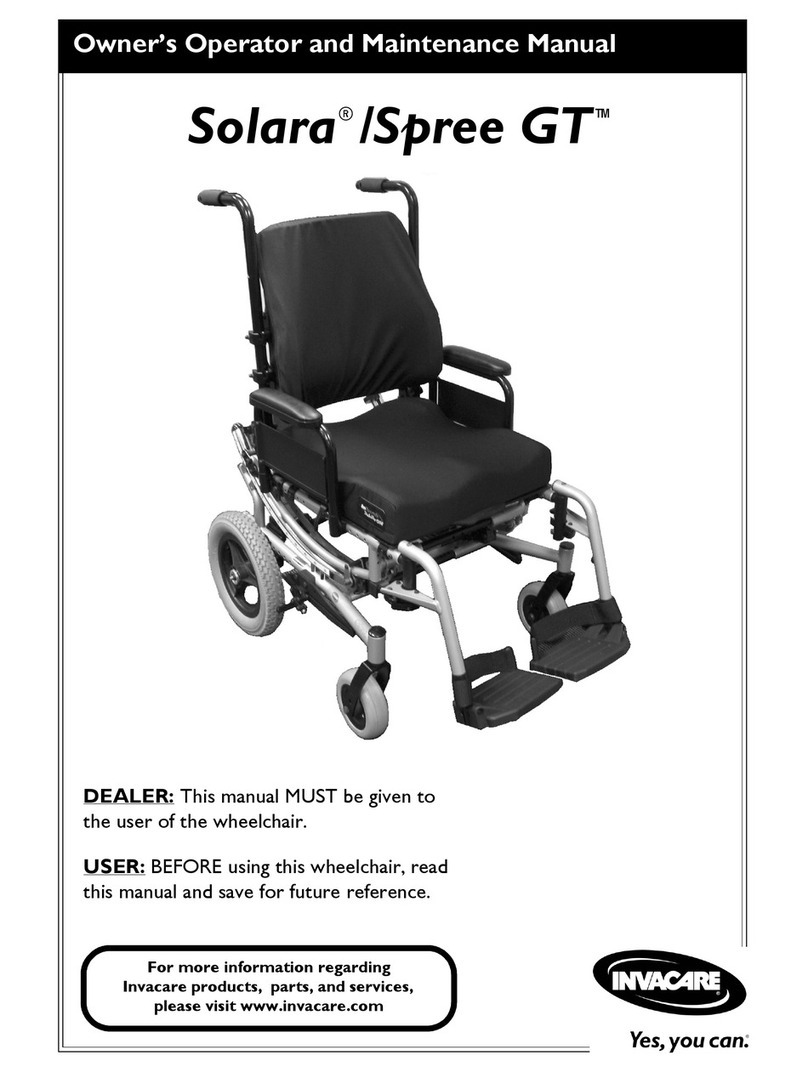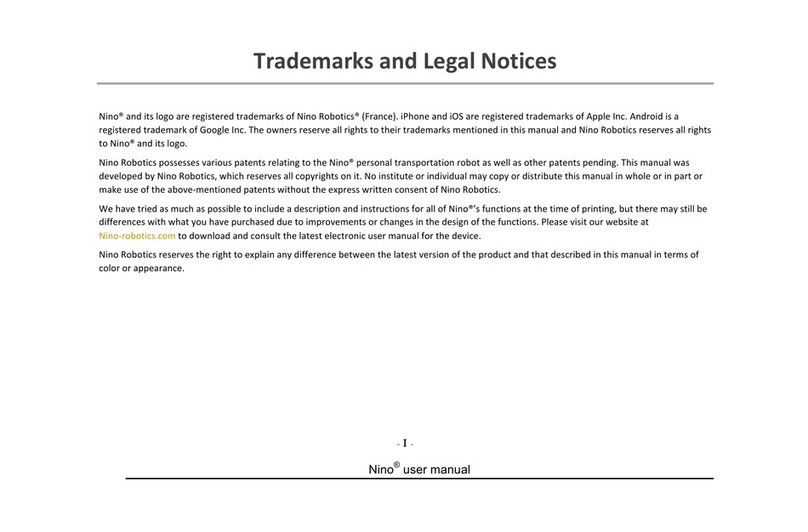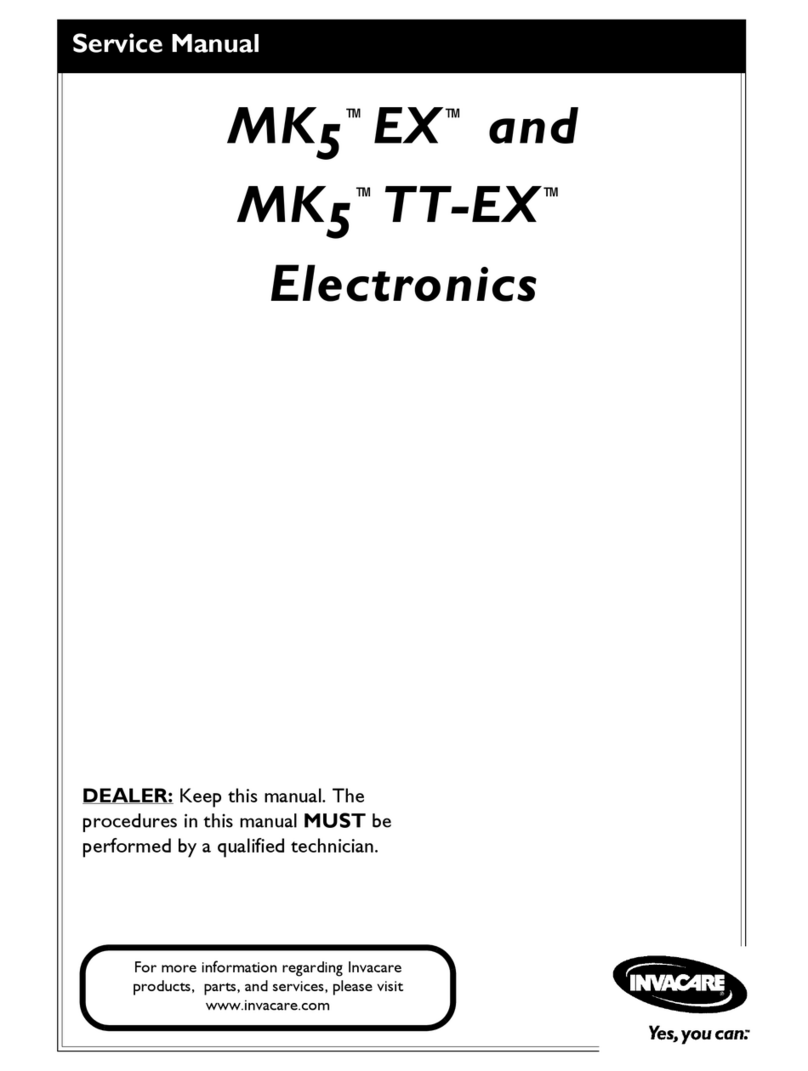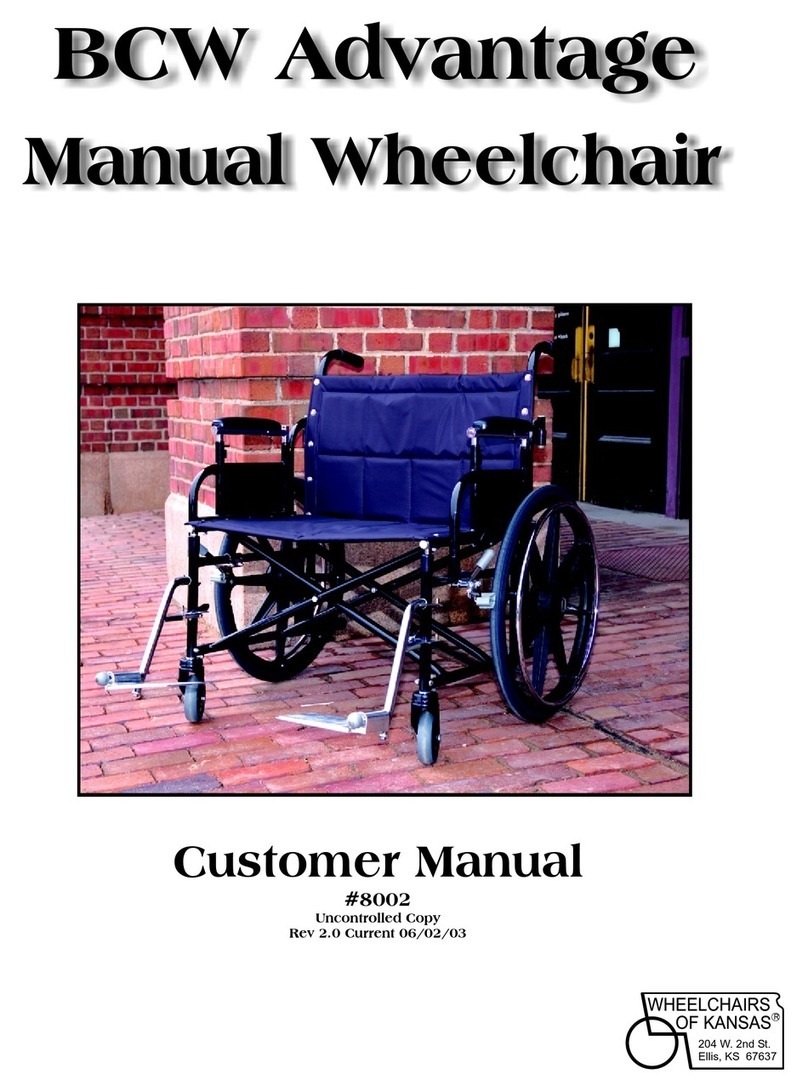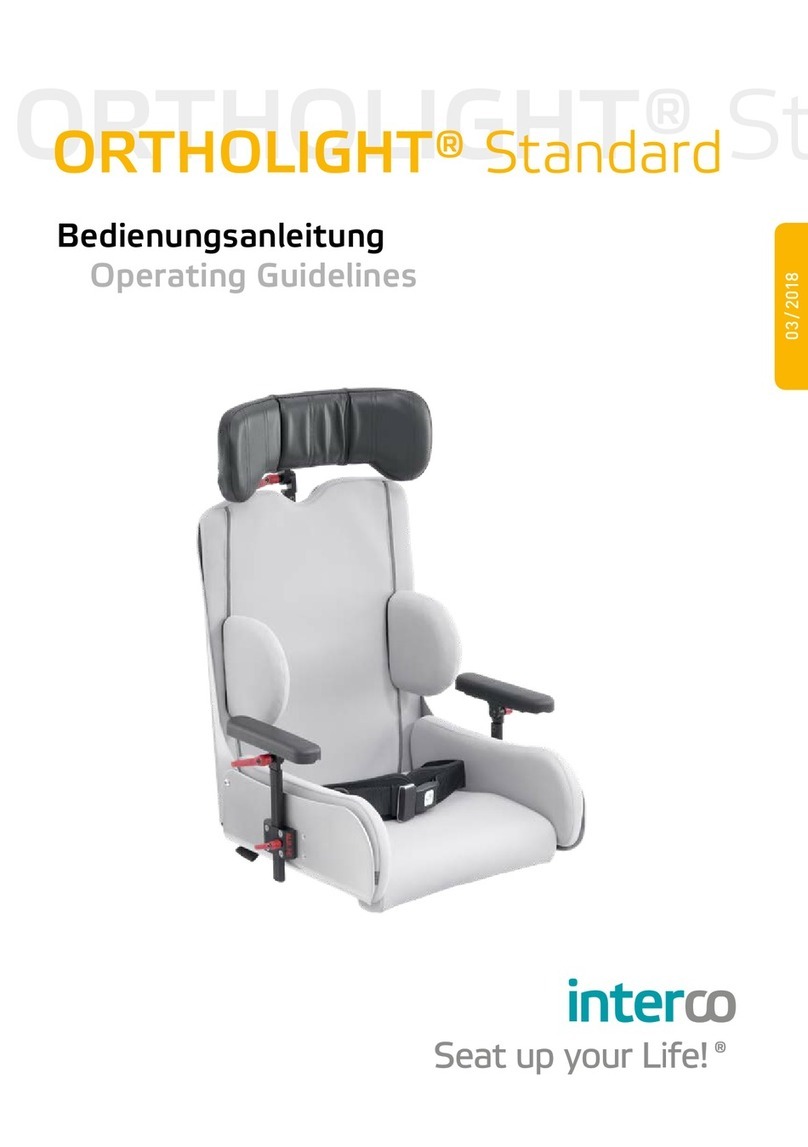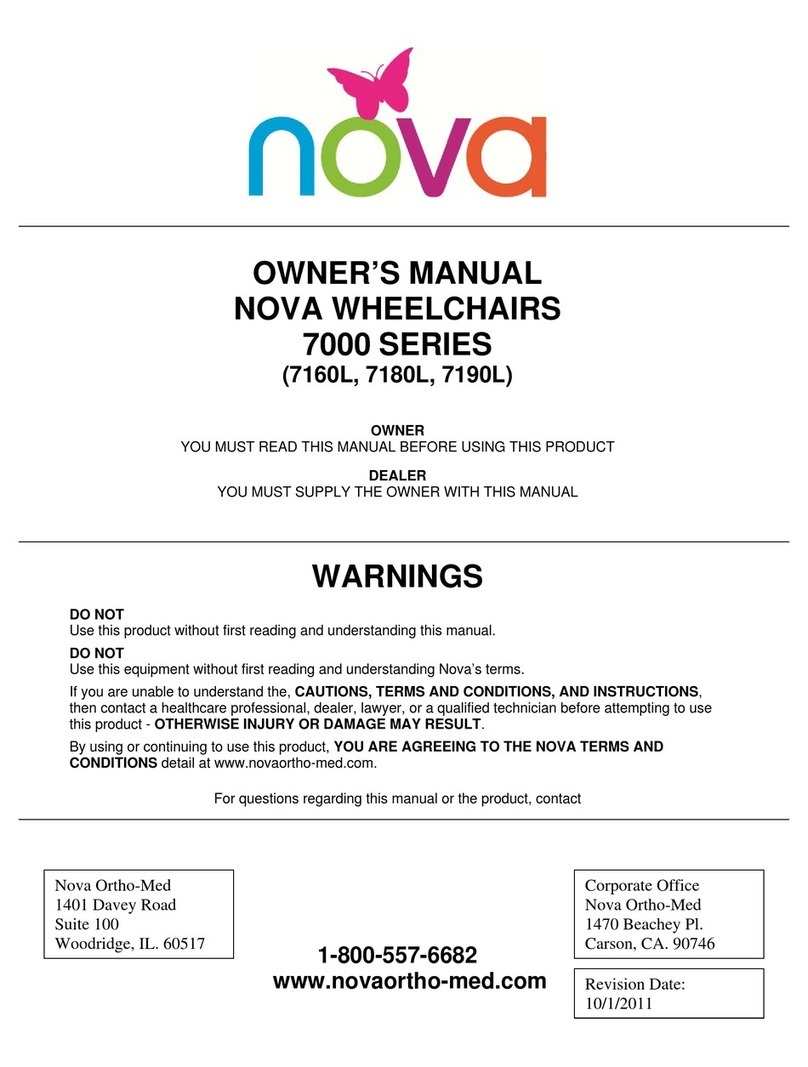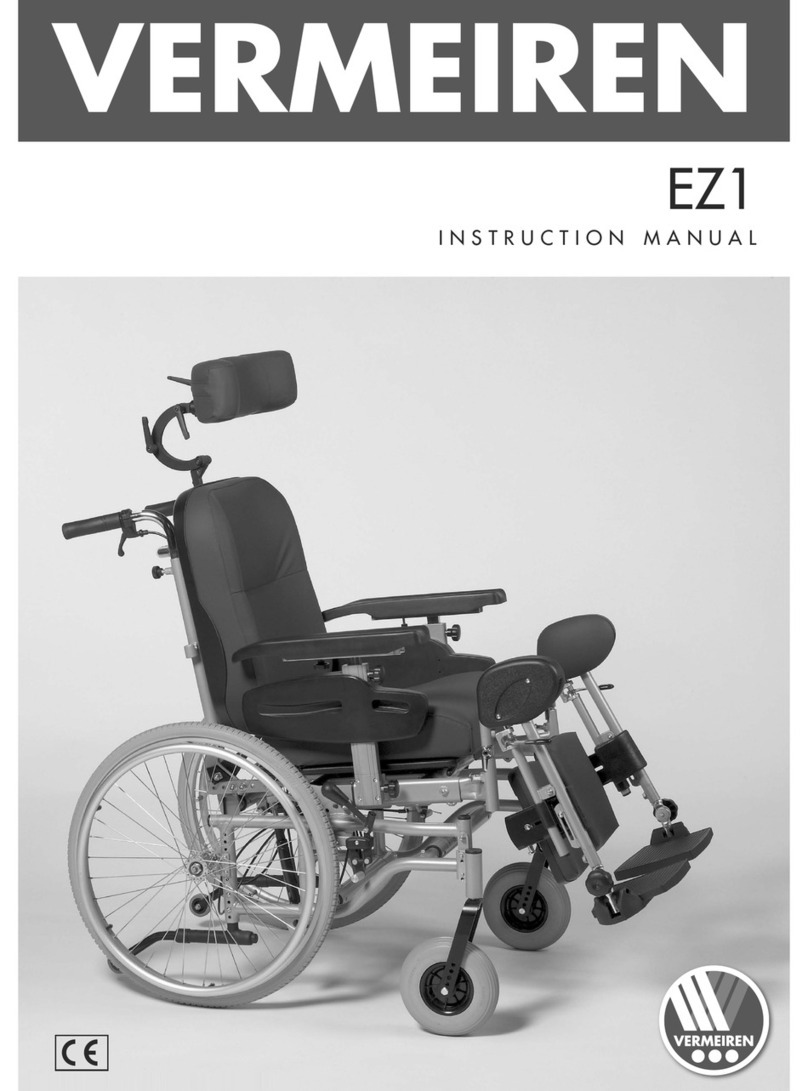
1. General – introduction
Intended use.......................................................................3
2. Description
...........................................................................................4
3. The chairs possibilities
....................................................................................... 4-5
4. Accessories
....................................................................................... 5-6
5. Settings
Front seat height.................................................................7
Adjusting the front seat height by using the front fork
attachment.........................................................................7
Setting the angle of the front fork attachment....................7
Mounting the front fork .....................................................8
User manual
..................................................................................... 9-20
Symbols and warnings ......................................................10
Transportation in vehicles..................................................11
Handling..................................................................... 12-13
Settings seat comfort.................................................. 14-15
Driving technique, maneuvering.................................. 16-18
Maintenance & Fault-finding chart....................................20
5. Settings.
Seat angle.........................................................................21
Seat depth........................................................................21
Seat comfort.....................................................................21
Adjusting back support height .........................................22
Adjusting back support angle ...........................................22
Adjusting back support height (height adjustable push
handle) .............................................................................22
Adjusting back support upholstery ...................................23
8. Readjustments
Attendant brake ...............................................................24
Continuously angle-adjustable legrest (option)..................24
Amputee legrest (option) ..................................................24
9. Accessories - adjusting, handling
Positioning belt.................................................................25
10. Technical data
Etac Transit .......................................................................26
Tests and Guarantees .......................................................26
11. Service and maintenance
Upholstery ........................................................................27
Rear wheel/castor wheel, front fork attachment ...............27
Brakes ..............................................................................27
Washing the frame ...........................................................27
Miscellaneous ...................................................................27
Contents
